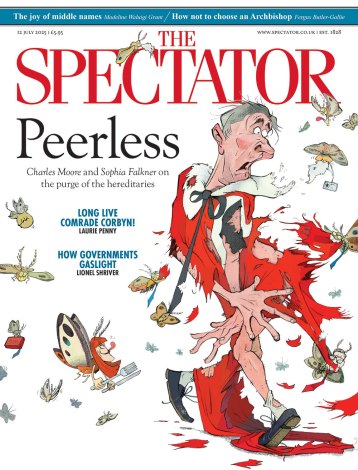
Lancaster: The Second World War’s Greatest Bomber, by Leo McKinstry
Leo McKinstry’s Lancaster: The Second World War’s Greatest Bomber offers more than is promised by the title. As in his last book, Spitfire: Portrait of a Legend, McKinstry has taken an iconic airplane and, in telling its history, gives not only the technical dimensions of its invention but also the myths that came to surround it. He relies heavily upon the recollections of airmen, quoting interviews and their unpublished memoirs alongside a traditional narrative of engineering and combat. This new book is less a simple history of the Lancaster than a broader history of the second world war from the perspective of a single weapon.
The Lancaster began as a failure. In June 1936 the Air Ministry issued a specification for a twin-engined medium bomber: it would, according to the original plan, carry a crew of four and take off with the aid of a giant catapult. The aircraft manufacturer A. V. Roe (know as ‘Avro’), under Chief Designer Roy Chadwick, first developed the Manchester bomber, which was unsuccessful from its first test run. Chadwick lengthened the wingspan to 100 feet and added four Merlin engines, and on 9 January 1941 the Lancaster bomber was ready for its maiden flight.
The key was the Rolls-Royce Merlin engines, which also power the Spitfire. ‘Merlins don’t roar; they sing,’ McKinstry quotes one airman as saying, and the Mk. I Lancaster carried the Merlin XX: they ran on 100 per cent octane fuel, gave the Lancaster a range of 3,000 miles, and were ‘the epitome of strength and reliability’. McKinstry lovingly details the changes and specifications of each of the types, for the remarkable power of the Lancaster came to influence the development of bombing strategy.
During the 1920s and early 1930s, science fiction writers and eager politicians had conjured a terrible new threat: of the all-powerful bomber, capable of destroying whole cities and instantly winning wars. ‘The bomber will always get through’, Stanley Baldwin famously promised in the House of Commons during a debate in 1932. When the war began, however, far from being instruments of all-consuming destructive power, ‘bomber forces turned out to be both vulnerable and ineffectual’. In August 1941, a civil servant in the War Cabinet, called D. M. Butt, released an analysis of reconnaissance photographs from bombing raids, carried out until this point in Whitley, Wellington and Hampden bombers. Only a third of bomber crews, he found, came within five miles of hitting their target, and on moonless nights this figure fell to a 15th.
The Lancaster arrived just as the bombing war was being reinvented. The first Lancaster completed production in October 1941, and that autumn a new navigational system called ‘Gee’ was being tried. During 1941 the Air Ministry were also supporting the development of new bombs: the 4,000 pound ‘Cookie’ and the four-pound incendiaries, 22 inches long and made of magnesium. In February 1942, Arthur Harris took over as Commander-in-Chief of Bomber Command, and at the end of May 73 Lancasters were in the famous ‘thousand-bomber raid’ on Cologne. From here, the bombing war grew drastically in scale and efficacy. ‘During just over three years of wartime operations,’ notes McKinstry, ‘Lancaster armourers loaded 51 million incendiaries and 609,612 tons of high explosives.’ He tells of the extraordinary Dambusters raid of May 1943 when Lancasters dropped nine 1,000-pound spinning bombs on three dams in western Germany, and of the firestorm raised by the RAF at Hamburg in late July 1943, when a force including 354 Lancasters dropped two and half thousand tons of bombs on the city and its suburbs, killing 45,000 people.
‘The name of the Lancaster is associated with the horrors of Hamburg in 1943 and Dresden in 1945,’ McKinstry writes, but it is also linked to Arthur Harris, who oversaw Bomber Command during the huge area bombing campaigns of the second half of the war. McKinstry, like many before him, comes finally to condemn this campaign and its commander. He accuses Harris of ‘myopia,’ and ‘relentlessly aiming for nothing more than urban devastation.’
This is not wholly fair, for Harris was aiming to win the war. In criticising Harris, McKinstry is following the lead set by the official British and American bombing surveys, conducted after the war. Recently, however, the military historian Richard Overy (whom McKinstry mentions) and more importantly the economic historian Adam Tooze (who does not appear in McKinstry’s bibliography) have argued against the conclusions reached by the bombing surveys.
‘After VE Day the Lancaster was never to be involved in any offensive campaign again,’ writes McKinstry. The story of the Lancaster is therefore specifically a story of the second world war, and this thorough, engaging new history seeks to draw together all aspects of the bomber and its career, from the recollections of crews to the details of engineering, and the controversies which surround it still today.





Comments